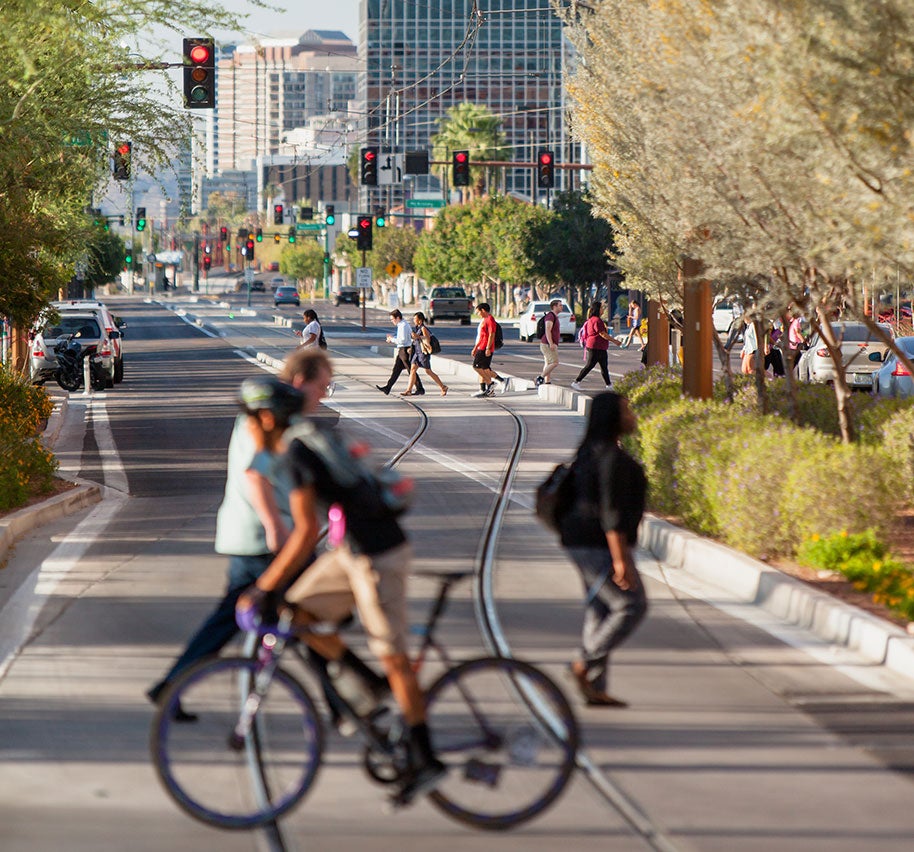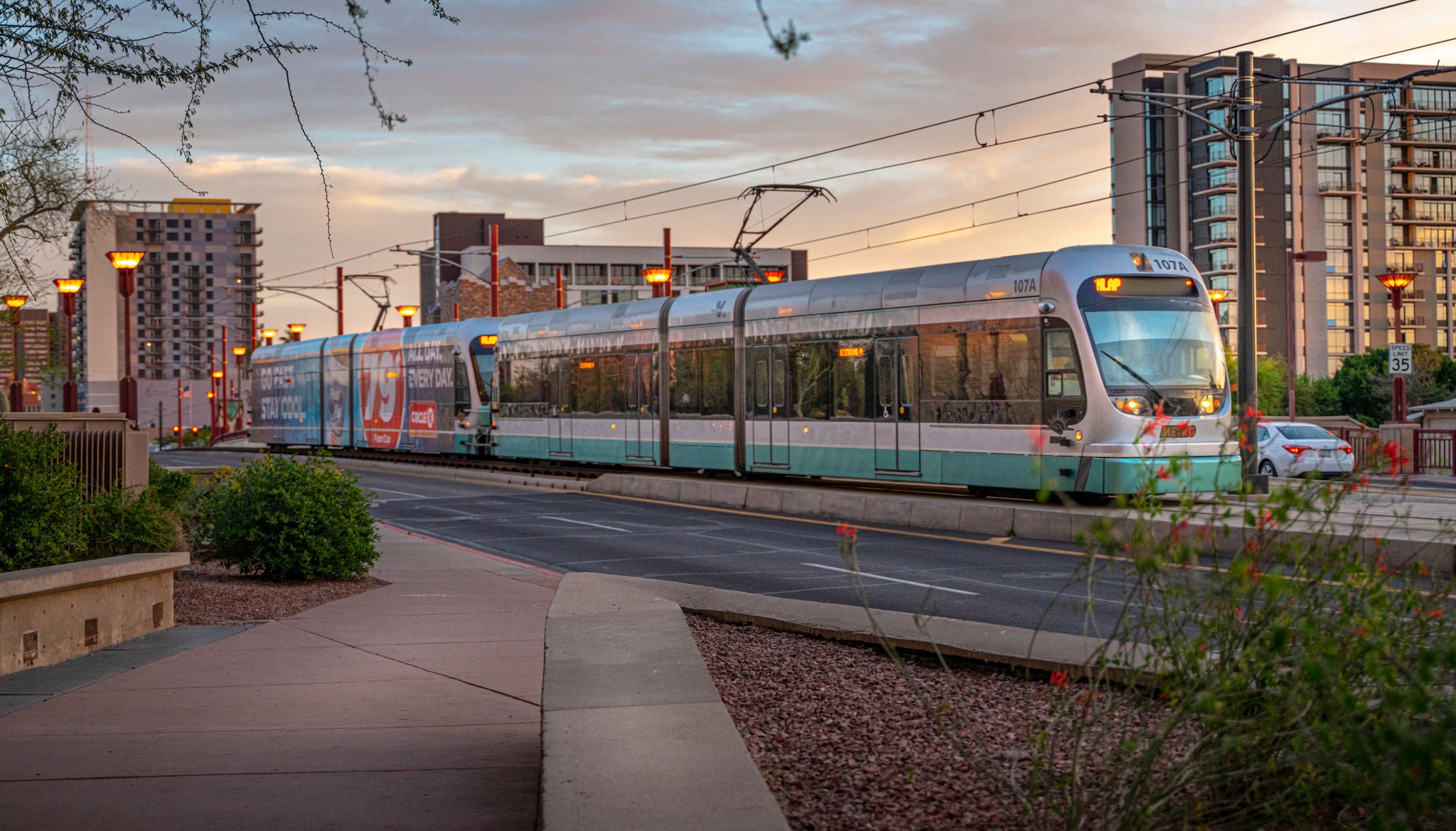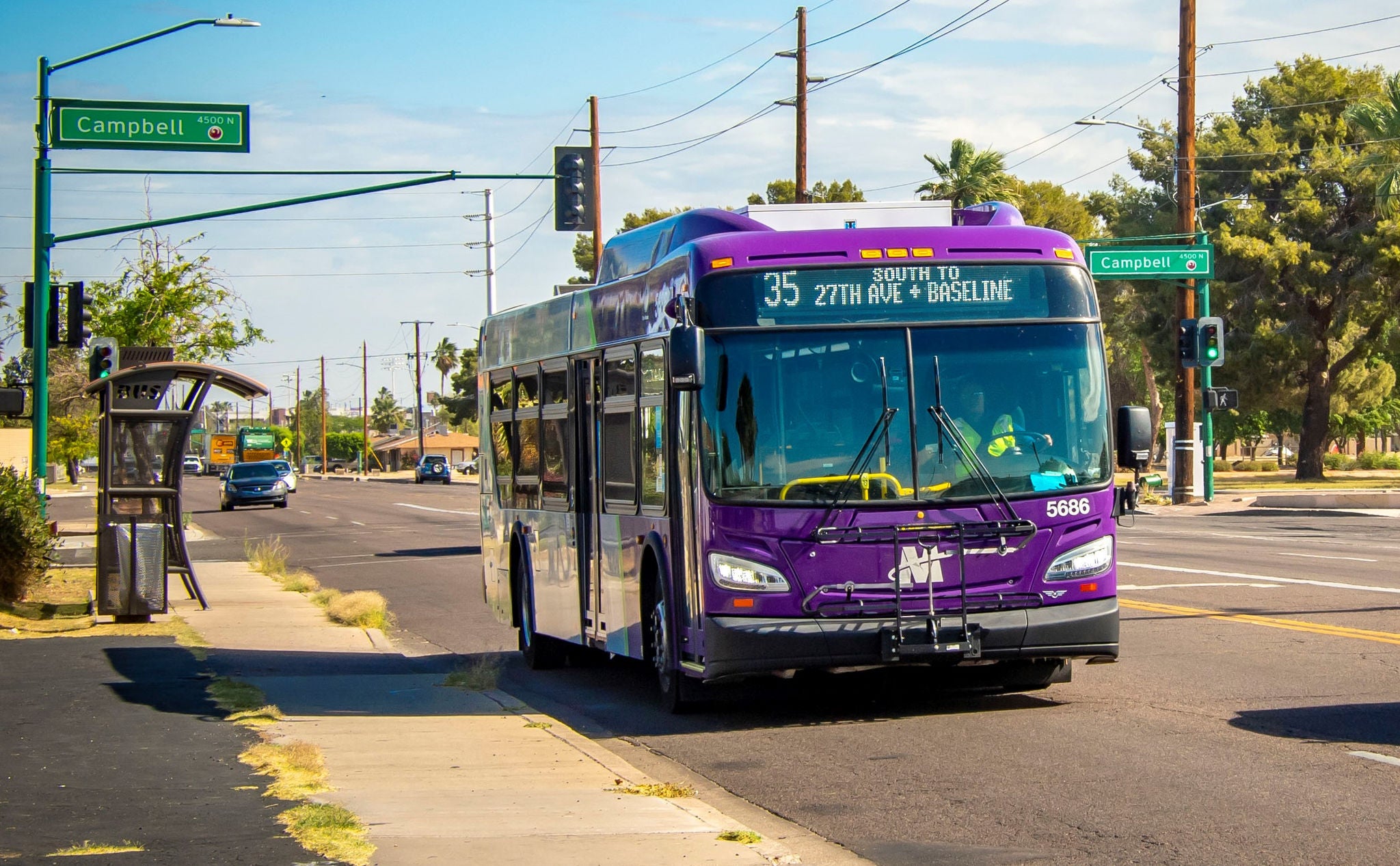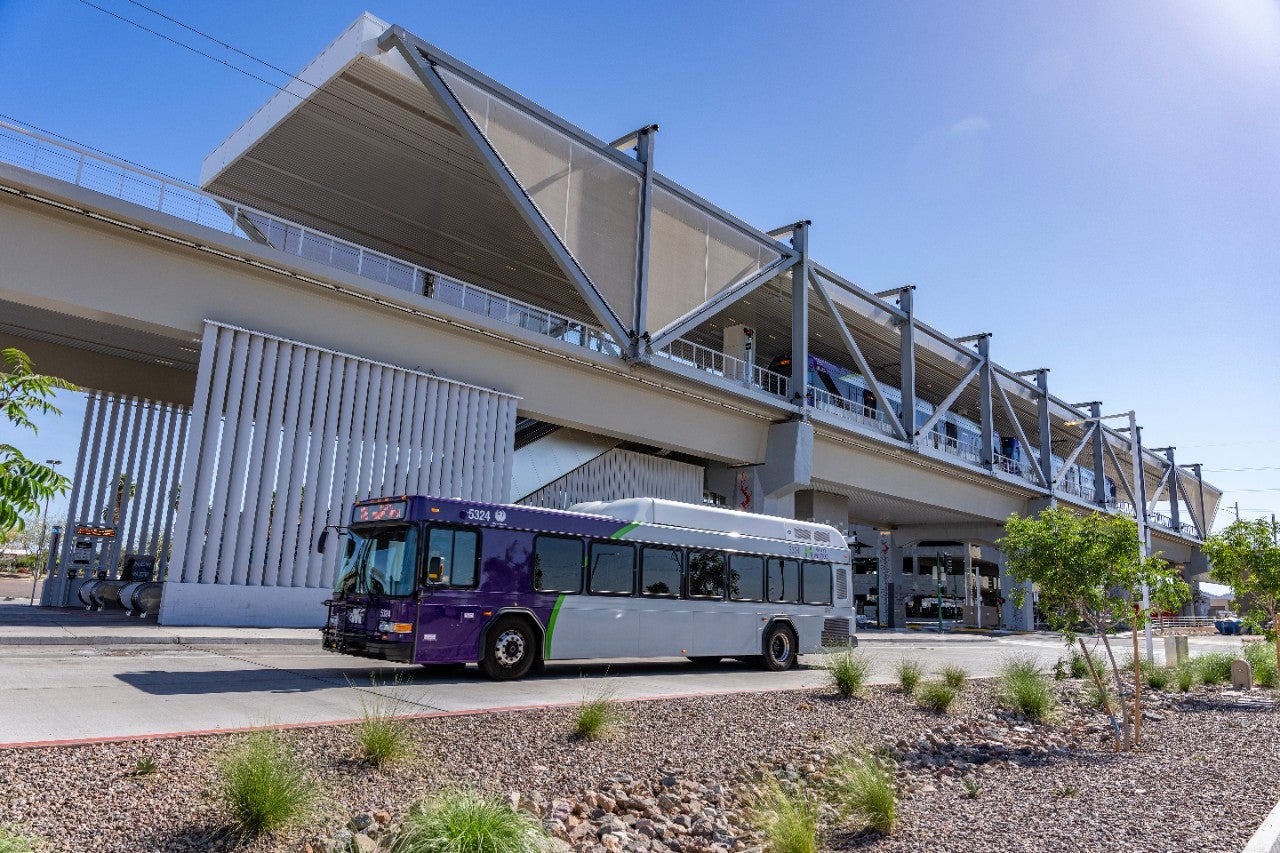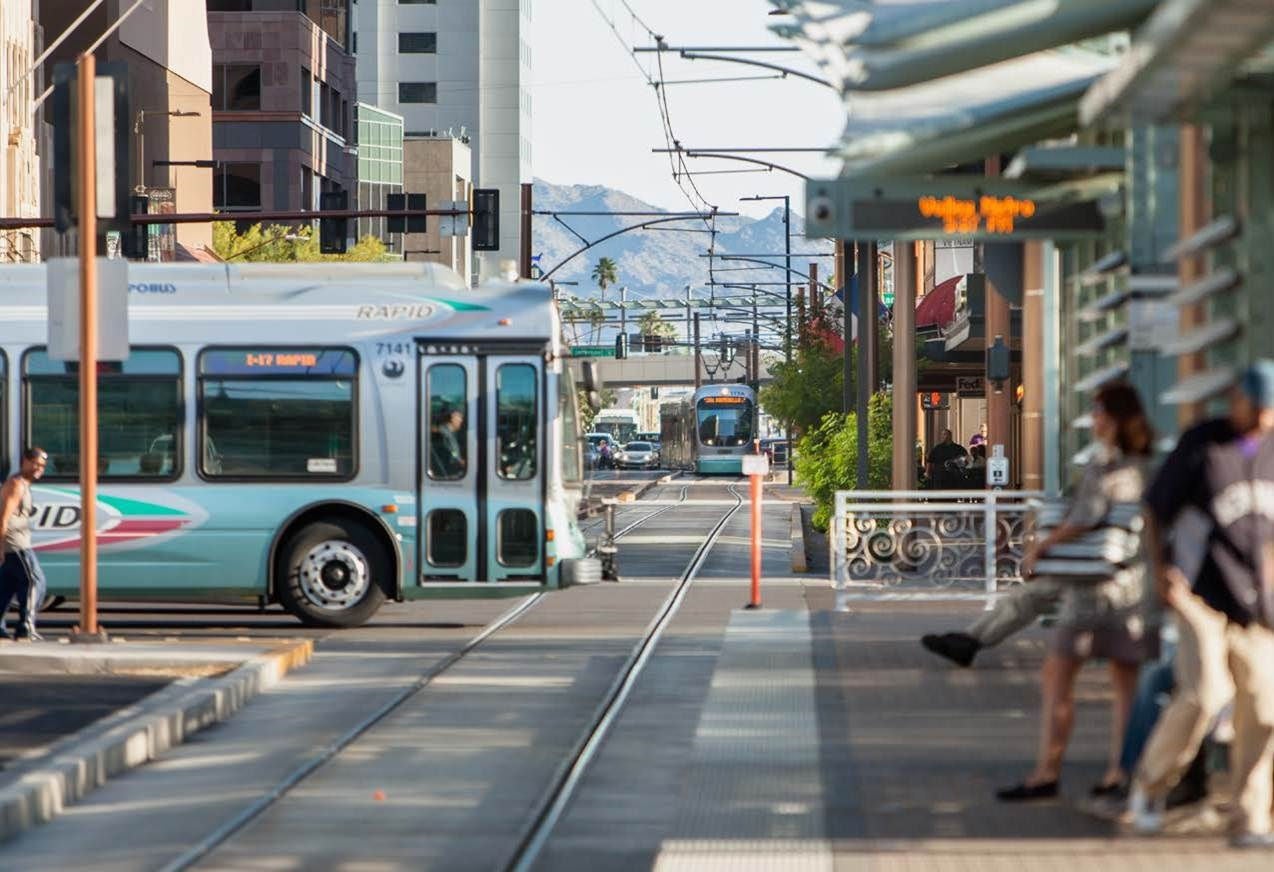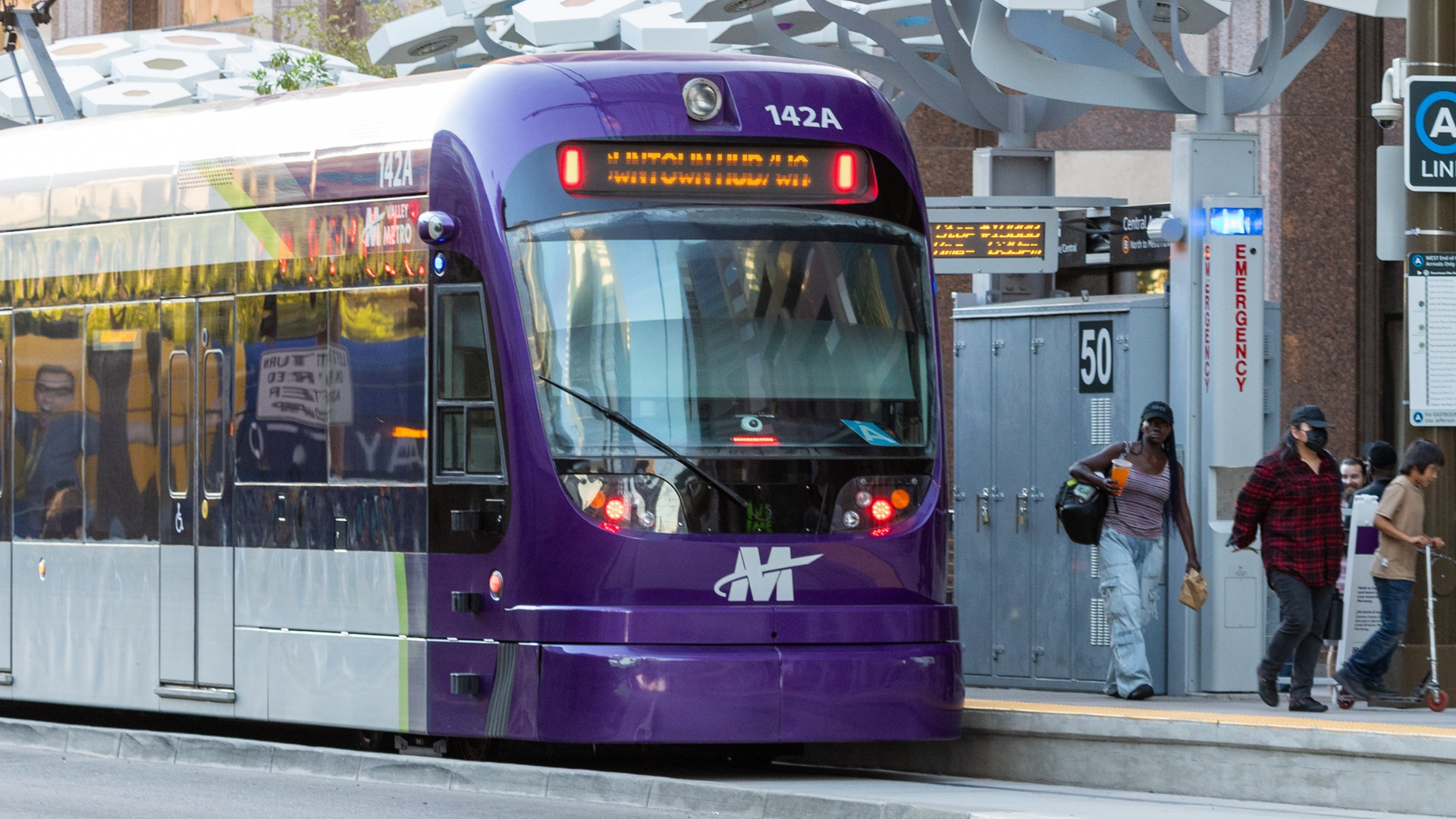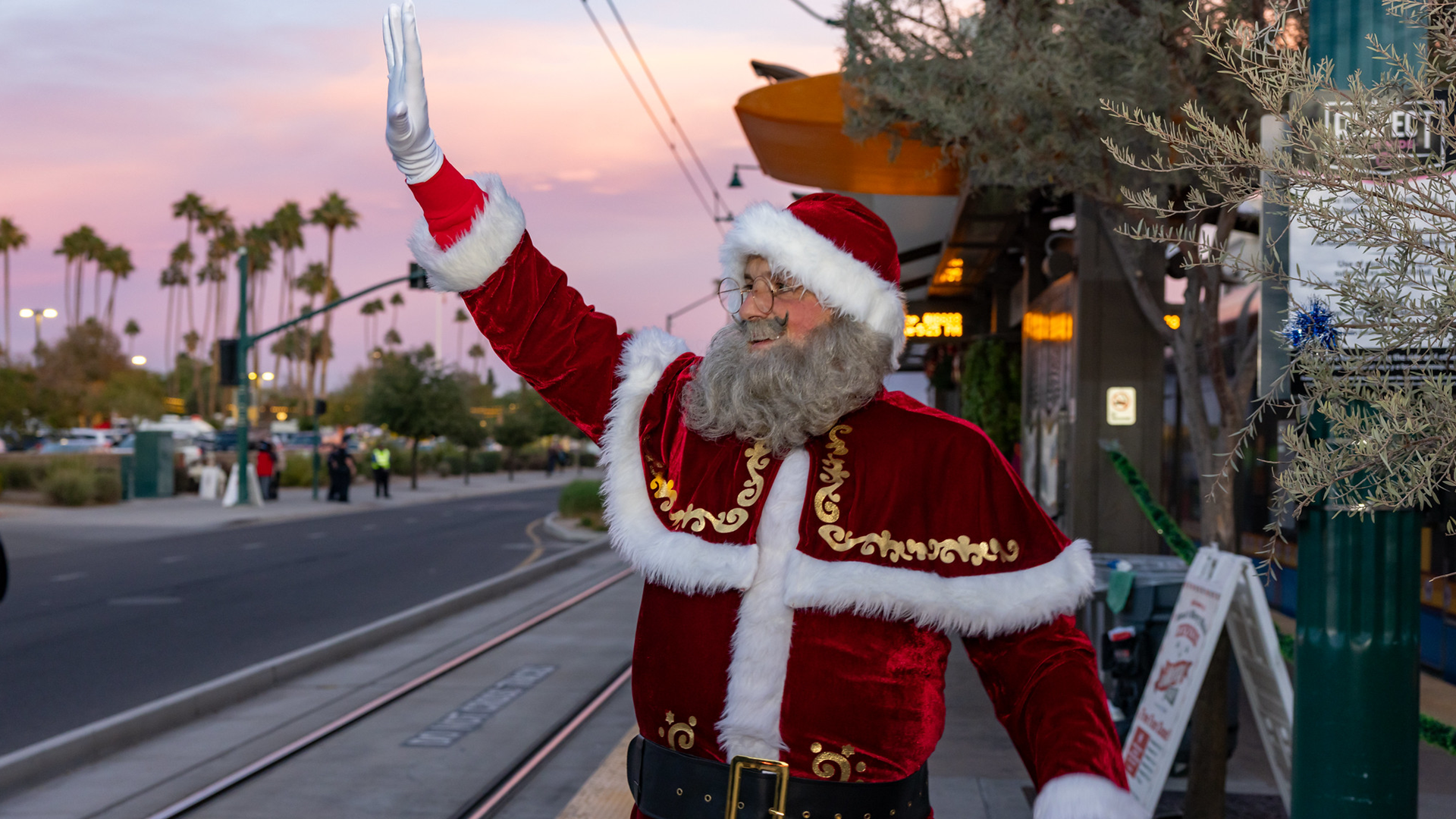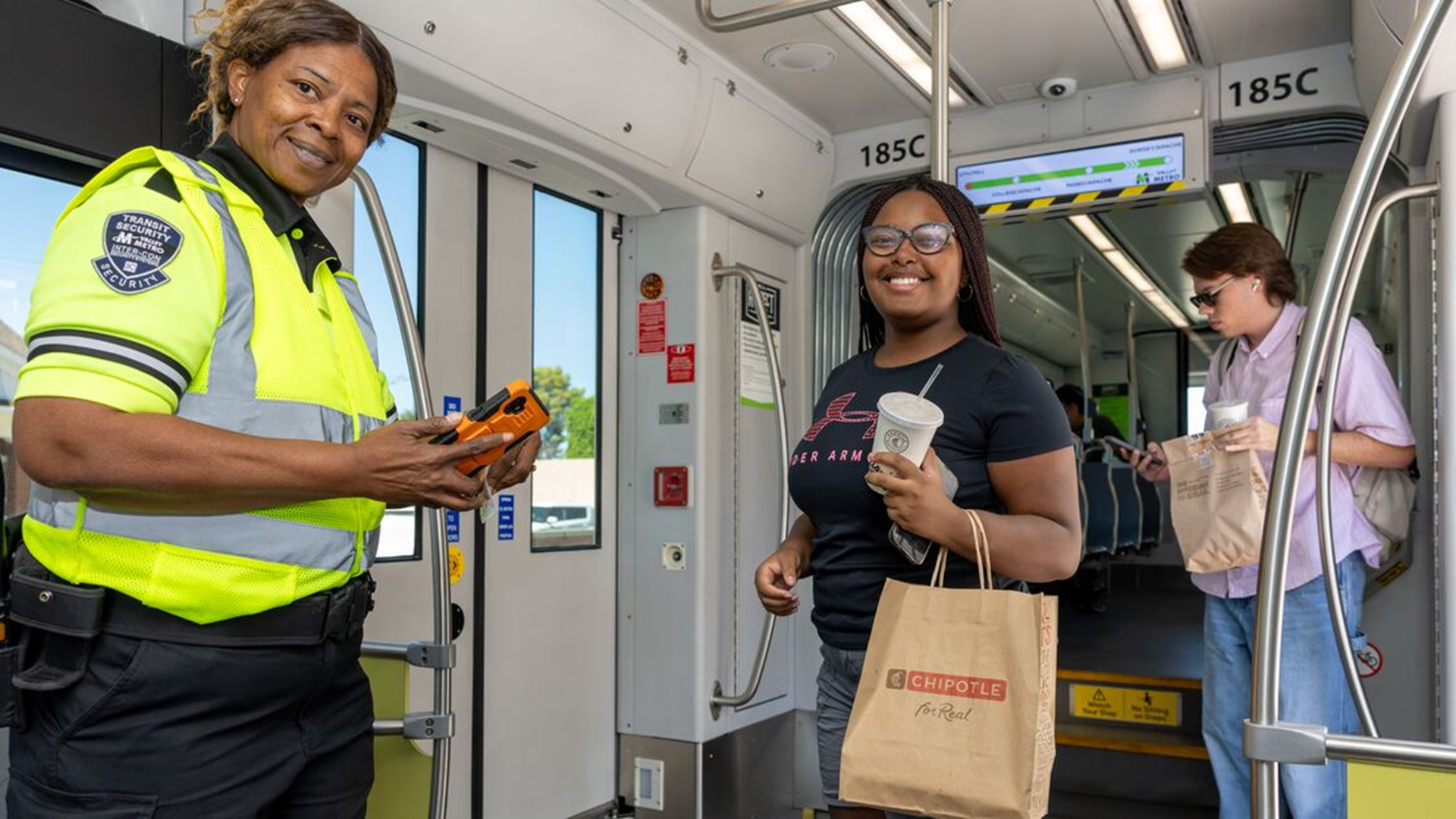Phoenix launches a Citywide food drive to assist residents experiencing food insecurity during the holidays.
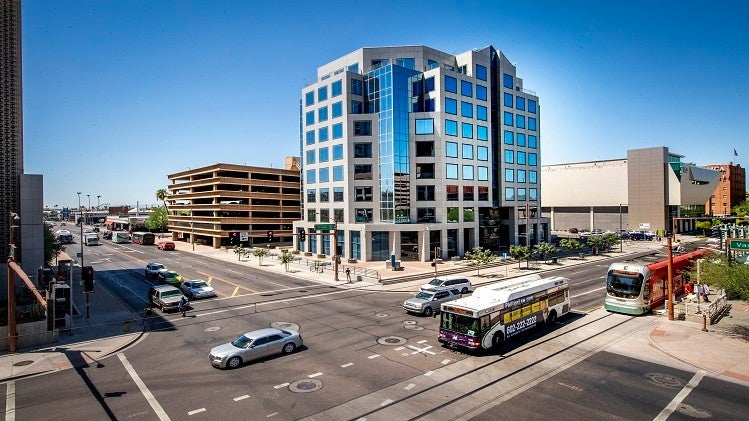
Overview
The City of Phoenix Public Transit Department (PTD) provides Phoenix residents with a variety of convenient transit options, which range from local and commuter buses to Dial-A-Ride services for senior citizens and individuals with special needs. PTD is comprised of four divisions, which include Director's Office, Facilities and Oversight, Management Services, and Operations.
The Phoenix Public Transit Department is also the largest member of the Valley Metro/Regional Public Transportation Authority and participates in oversight of the Valley Metro light rail system.
Rider Information
-
How to Ride
Visit the Valley Metro website to plan and track your ride.
-
Public Transit ADA
The City of Phoenix is committed to serving the ADA community by providing accessible transit options through ADA compliant vehicles and Dial-a-Ride service.
-
Public Transit Title VI
Learn about Phoenix's public transit Title VI program, which ensures non-discrimination and equal access to transit services for all riders.
-
Dial-a-Ride
Phoenix Dial-a-Ride is a shared-ride service that allows ADA-certified residents to schedule trips around the city.
Valley Metro
Valley Metro is the regional public transportation agency providing coordinated transit services to residents of metro Phoenix. From regional bus, streetcar, light rail and paratransit service to alternative commuter solutions, Valley Metro’s core mission is to develop and operate a network of transit services.
